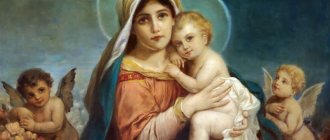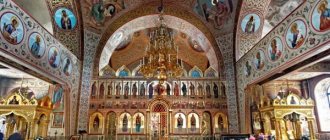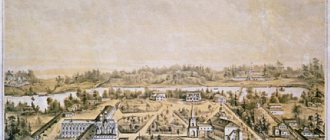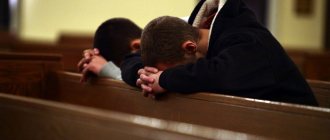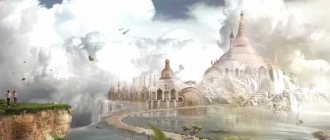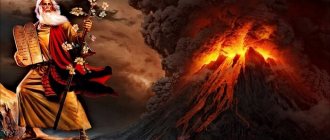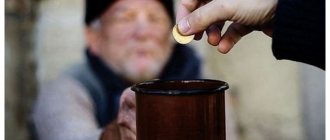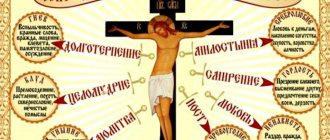After the Last Supper, the night before his arrest, Jesus communicated with God the Father in the Garden of Gethsemane. He came there with His disciples, wanted them to support Him, and the prayer was a congregational one. But all 12 apostles fell asleep under the olive trees and slept until the morning. Christ woke them up before the arrival of Judas Iscariot and his guards.
Currently, the Garden of Gethsemane occupies a small area. It still has olive trees, but they were planted 11-12 centuries after Christ. There are no witnesses left to the last prayer of the free Jesus in a human body.
Story
The Gethsemane prayer is described in many church books, and primarily in the Gospel. During the entire period of Jesus' preaching, 12 of His disciples followed him. In fact, there were much more open and secret supporters of Christ. The facts testify to this. After all, someone gave Him his donkey so that the Savior could make a triumphal entry into Jerusalem. The owner of the room on the top floor remains unknown, but he knew to whom he was providing the premises and why.
Gethsemane was private territory at that time. The gardens were guarded and no one was allowed to just walk through them. The confidence with which Christ entered the Garden of Gethsemane suggests that the owner of this section of the valley was a secret supporter of Christianity and deliberately provided his Maslenitsa grove to the Savior and the apostles.
The Roman rulers felt that Jesus' popularity was growing. The idolaters were afraid of this and tried with all their might to destroy Christ as quickly as possible, to prove that the Messiah does not exist.
On Thursday before Easter, Christ and his disciples went to the Garden of Gethsemane in Jerusalem. Entering it, he invited his followers to sit and wait for Him while he prayed. He invited only three with him: John, James and Peter. It was they who witnessed his Transfiguration the day before.
Having walked deep into the Maslenitsa grove, Christ in the Garden of Gethsemane began to yearn and grieve. "My soul is dying." He then addressed a trio of especially trusted disciples: “Stay here and watch with Me.” Having moved within a stone's throw, Jesus began to pray for the cup. The words of this text, the address of the Son of God to the God-Father, are known to every Christian. “My Father! Pass this cup past me.” Then, as if remembering his appointment as a Savior and the atonement of human sins through suffering, he added: “However, not as I want, but as You want.”
Having risen and approached the three faithful disciples, Jesus saw that they were sleeping. He turned indignantly to Peter, asking him if they could not all stay awake for only one hour. Then he told them to stand and pray with Him.
But the apostles fell asleep again, and Christ read His prayers alone. Only the Angel of God flew in and supported Him.
In the morning, Jesus woke up His disciples and told them that it was time to go, His hour had come, the one who betrayed Him was approaching.
Judas Iscariot approached Jesus and kissed Him. So he showed the soldiers and servants of the high priests who Christ was, whom they had come to arrest. Since then, the expression “kiss of Judas” has appeared among the people, which means betrayal and false flattery.
Defending the Savior from the attackers, Peter pulled out a dagger and cut off the ear of one of the servants. Then Jesus said there was no point in resisting. He can ask the Father for a huge army in His defense, but he will not do it. Everything that happens is God's will and should be obeyed. After this, He lifted up the ear, put it in place, and made it grow, healing the servant of the high priest.
Jesus then addressed those who had come to arrest Him. He recalled that more than once they sat next to each other in the temple and listened to Christ’s sermons. And now they attacked Him with swords and daggers, like a criminal. After these words, the apostles ran out of the garden. The soldiers tied Jesus up and took Him to their ruler in Jerusalem.
INTERESTING: Cathedral of Christ the Savior in Moscow.
“Yuri Zhivago’s Notebook” and its uniqueness
For ten years, from 1945 to 1955, Boris Pasternak worked on his main text, the novel Doctor Zhivago. Its seventeenth and final part is a collection of poems allegedly written by the main character and found in his papers after his death. This poetic cycle seems to retell, lyrically, the story presented earlier in the novel.
The combination of poetry and prose in the book was part of Pasternak's earliest creative plans. With his poems, the author not only enlarges and deepens the image of his hero, but at the same time entrusts Yuri Zhivago with his own thoughts and experiences. This combination of autobiographical beginnings with “alien speech” makes Pasternak’s cycle truly unique.
"Poems from a novel in prose." Cover of a typescript prepared by Boris Pasternak
Of Yuri Zhivago’s 25 poems, seven are dedicated to biblical events: “On Passion Street”, “The Christmas Star”, “Miracle”, “Bad Days”, “Magdalene” (two poems with the same title) and “Garden of Gethsemane”. Each of the poems is not only a lyrical interpretation by the author of biblical events. The poetic texts of Yuri Zhivago’s notebook reveal the reverent and serious attitude towards faith of Pasternak himself, who turns to Christ with the words: “You meant everything in my destiny...”
Of the seven gospel poems, most are dedicated to the events of Holy Week. This Passion microcycle begins with the poem “Miracle,” which is based on the Gospel story about the barren fig tree cursed by Jesus (this event is remembered on the first day of Holy Week). In the next poem, “Earth,” the poet’s farewell to his friends is correlated with the Last Supper. The poem “Bad Days” covers the first four days of Holy Week: on the first day Christ arrived in Jerusalem, on the fourth day he appeared before the high priests. Two poems are dedicated to Mary Magdalene? The evangelists tell different stories about the woman who anointed Jesus with precious ointment and dried His feet with her hair. Bible scholars indicate that this woman could not have been Magdalene at all, but some other woman. Be that as it may, in art and literature, the images of these women merge precisely in the figure of Magdalene. - the woman who washed Jesus' feet and dried them with her hair. The cycle reaches its climax in the last poem, “The Garden of Gethsemane,” where the poet mourns with the Savior on the eve of crucifixion and death. However, the fear of death is overcome by sincere faith in eternal life and the miracle of the resurrection of Christ.
How to get there
Tourists who want to visit the Garden of Gethsemane and other places dear to every Christian and located nearby can take a ticket for a special tour. In this case, all they have to do is get to Moscow. Then the travel company will take them to Israel and take them to all the holy places.
Independent travelers arriving in Tel Aviv can choose several ways of travel: taxi, intercity bus, rented car with or without a driver. Excursions can be booked on site. Each hotel serves its clients with a cultural and religious program. Only the room must be booked in advance. There are many people who want to visit the Mount of Transfiguration, the Garden of Gethsemane and other places.
Yandex.MapsYandex.Maps
To get to the garden, you need to go to the Kidron Valley, to the foot of the Mount of Olives, to the Church of All Nations. Palestinian buses number 43 and 44 run from the Damascus Gate. They carry their passengers along the same route. You should choose buses No. 1, 2, 38, 99. You should get off at the Lion Gate stop. There is less than 500 m to go from there.
Gehena Fire
Speaking about the cemetery, I also remembered the prototype of the holy cemetery - Gehena of Fire. True, this terrible place, a fiend of hell, is located south of Jerusalem in the valley of Hinnom.
Gehenna is a valley southwest of Jerusalem and a symbol of Judgment Day in Judaism and Christianity, and in Islam it is equivalent to the word “Hell”.
Gehenna of Fire
The Valley of Hinnom (Greek “gehenna”) is one of two valleys (the second is the Kidron Valley) near the city of Jerusalem. It was the site of various kinds of pagan rituals associated with fire.
Gehenna of Fire, Jerusalem
According to the guide, this place is described many times in the Old and New Testaments, the valley of Hinnom of God's punishment, curses and desolation, a place for angry evangelical and Koranic sermons, promising eternal fiery torment for apostates and sinners. Here, pagan rituals included holding children through fire (in early times, human sacrifices to the scorching sun), executions were always carried out - people were burned alive, corpses were dumped with garbage. There was no free space in the Valley of Fire due to constant executions. The stench of burnt human flesh always lingered here and rose over the city.
“And do not be afraid of those who kill the body, but are not able to kill the soul; but fear Him more who can destroy both soul and body in fiery hell.” (Matt. 10:28)
To be honest, I never thought that this place existed in nature on a physical level; “fiery Gehenna” was always presented as a metaphor describing hell and horror, but no! And today this terrible place looks quite pretty.
Kidron Valley
The Kidron Valley is often mentioned in the Bible; according to Christian eschatology from the Old Testament, it is believed that the Last Judgment will take place in the valley. It starts east of Jerusalem and divides the Temple and Mount of Olives.
Features of the Garden of Gethsemane
In the seventies of the first century, the Romans completely destroyed Jerusalem and cut down all the Maslenitsa trees. Legend has it that olives are amazingly resilient and have regenerated themselves from the roots left in the ground. Scientists conducted a DNA analysis and came to the conclusion that on the Mount of Olives there are trees, the upper part of which is much younger than the underground part.
In the second half of the 19th century, the garden came under the jurisdiction of the Franciscan Order, which belongs to the Catholic Church. The monks erected a stone fence around the perimeter, protecting the shrine from the accidental entry of animals and unwanted visitors.
Historical context
“The Garden of Gethsemane” was written by the author in 1949 - in the midst of work on the novel “Doctor Zhivago”. The poem became not only an integral part of it, but also the focus of the key meanings of Pasternak’s entire book. At the same time, the poet is actively engaged in translation activities, for example, he continues to translate the works of Shakespeare and Goethe’s Faust. However, at the same time, problems were brewing for Pasternak in literary circles: he was “attacked” in the press, called “an author without ideas, far from Soviet reality.” In October 1949, the writer’s close friend, Olga Ivinskaya, was arrested, who significantly influenced the creation of the main female character in Doctor Zhivago, Lara Guichard. In November and December 1949, Pasternak wrote seven poems for his novel. "Garden of Gethsemane" is one of them. It is this that will become the poetic note that will complete this multifaceted novel, and the poem where the words of Jesus about the coming resurrection and victory over death will become the main hope that Pasternak bequeaths to his readers.
Churches of Gethsemane
After the Resurrection of Jesus Christ and the spread of Christianity, temples belonging to different denominations began to be built in the Kidron Valley, in the olive gardens.
Church of All Nations
The first to appear was a temple belonging to the Franciscans, called the Church of All Nations. Inside it, next to the altars, lies a large stone. According to legend, it was on it that Jesus prayed on his last night, before he was arrested and taken to torture.
Church of the Assumption of the Blessed Virgin Mary
In the Church of the Assumption of the Blessed Virgin Mary, the remains of Anna and Joachim, the parents of the Virgin Mary, rest. The Mother of God herself is buried here. Confirmation of the authenticity of her burial was received after opening the grave. From it they took out the belt and burial shroud of the Mother of God.
The Church of the Assumption is administered by the Orthodox Church of Jerusalem and the Armenian Apostolic Church.
Church of St. Mary Magdalene
Gethsemane Convent is located in the Russian Orthodox Church of Mary Magdalene. The buildings of the temple and monastery are classic examples of Russian architecture. The church was built in memory of the empress's mother. Its 7 domes are shaped like an onion
Quarantal
Another mountain that is not mentioned in the Gospel is Mount Carantal. There is nothing surprising here, since during the earthly life of Jesus this mountain did not have such a name. She received it only after the events that happened there. But these events were precisely described in the Gospel in some detail. The fact is that the word “quarantal” is a distorted Latin numeral “forty”. This was the name of the mountain where Jesus Christ spent his forty days of fasting after his baptism. Jesus, filled with the Holy Spirit, returned from the Jordan and was led by the Spirit into the desert. There for forty days He was tempted by the devil and did not eat anything during these days, and after they were over, He finally became hungry. And the devil said to Him: If You are the Son of God, then command this stone to become bread. Jesus answered and said to him, “It is written that man shall not live by bread alone, but by every word of God.” And, taking Him to a high mountain, the devil showed Him all the kingdoms of the universe in a moment of time, and the devil said to Him: I will give you power over all these kingdoms and their glory, for it has been given to me, and I give it to whomever I want; So, if You worship me, then everything will be Yours. Jesus answered and said to him, “Get behind Me, Satan; It is written: Worship the Lord your God, and serve Him alone. (Luke 4:1–8)
Quarantal is part of a mountain range that runs along the Judean Desert. Unlike the tree-covered Tabor and Olivet, there is no vegetation at all. Only at the foot can you see sun-dried grass and sparse bushes. Mount Karantal itself is a huge block of stone with steep slopes. Only experienced rock climbers can climb to its top. According to legend, Jesus Christ spent His fast in a cave on the eastern side of this inaccessible mountain. And from the top of Caranthal the devil showed Him all the kingdoms of the world.
It is difficult for a person to stay in these places even for a few hours. Heat, altitude, gloomy rocks on which there is not even a blade of grass... However, Jesus Christ spent forty days here in complete solitude, without eating food. On the sun-baked Mount Carantal, He showed the whole world how the weakness of the body can be overcome by the strength of the spirit directed towards God.
Gethsemane Grotto
In Gethsemane, a grotto has been preserved where Jesus Christ prayed at night. On the floor there were traces of bloody sweat that dripped from the Savior during his prayer. The cave is located next to the tomb of the Virgin Mary, to the right of it. Its size is 17 by 9 meters.
The Gethsemane Grotto was originally used to store water tanks. During the reign of Byzantium, burials were held there.
The grotto is especially revered by Catholics. This is the sacred place where Jesus prayed, and at the same time it was here that he was betrayed by Judas Iscariot.
In some church documents the grotto appears as the site of the Last Supper.
Around the 12th century the grotto was richly decorated. Traces of frescoes are still visible on the ceiling. The walls contain the remains of paintings. In 1932, the Franciscan Order acquired the grotto for its use.
During restoration after the flood in 1955, 40 burials were opened and the history of the grotto was studied in detail. After this, three new altars were erected. Currently, the grotto houses a Christian church and services are held.
Favor
But Mount Tabor is located very far from Jerusalem. The name of this mountain is not mentioned in the Gospel, but in church tradition one of the most important events in the history of mankind is associated with Tabor. Here Jesus Christ first revealed His Divinity to people in a visible way. No, of course, He had worked miracles before - He healed the hopelessly sick and even raised the dead, stopped a storm at sea with His one word. But at the same time, outwardly he remained an ordinary person for everyone present, no different from all other people. And then the day came when the three disciples He had chosen saw with their own eyes Who had been next to them all these years: And he said to them: Truly I say to you, there are some of those standing here who will not taste death until they see the Kingdom of God come to strength.
And after six days Jesus took Peter, James and John, and led them alone up to a high mountain, and was transfigured before them. His clothes became shining, very white, like snow, as a bleacher on earth cannot bleach. And Elijah appeared to them with Moses; and talked with Jesus. At this Peter said to Jesus: Rabbi! It’s good for us to be here; We will make three tabernacles: one for you, one for Moses, and one for Elijah. For I didn’t know what to say; because they were in fear. And a cloud appeared overshadowing them, and from the cloud came a voice saying: This is My beloved Son; Listen to him. And suddenly looking around, they saw no one else with them except Jesus alone (Mark 9:1-8).
The high mountain on which this miracle happened was Tabor. Here, at its top, the long-dead great prophets Moses and Elijah appeared before the astonished disciples, talking with their Teacher. And the Teacher himself suddenly changed in an amazing way. Not only did Jesus’ clothes glow with an unearthly whiteness, but His face also began to shine like the sun.
Mount Tabor is located just a few kilometers from Nazareth, a small village where Jesus spent his childhood and youth. The slopes of Favor are covered with evergreen oaks, olives, acacia, hazel, oleander, bushes of wild roses and jasmine. It took three hours to walk up the mountain. But those who made this journey were treated to an amazing view of the outskirts of Tabor. The mountain is surrounded on all sides by a flat plain. Like neatly divided pieces of cake, fields and gardens are visible on it. The entire valley below is cut by lines of roads. Separate from the others, straight as an arrow, the main route from Egypt to Damascus. Every day, caravans of mighty camels walked along it, carrying various goods. But from here, from Tabor, they seemed no more than ants. And on the horizon, in a light haze, the mountains surrounding the Sea of Galilee were visible.
Here, among all this earthly beauty, Jesus revealed to His disciples the heavenly beauty, eclipsing any human ideas about beauty. Forty days later He was to give His life for the salvation of mankind. Jesus knew that His death would be a difficult experience for His disciples. To strengthen their faith, Jesus leads them to Mount Tabor and shows them something that no one has ever seen on earth - the radiance of His Divinity.
Do you know that:
Overgrown with trees, lonely and huge, it towers over the surrounding area like a huge camel's hump. It is, as it were, rounded from the base to the top, which is why it got its name, which means a convex place (navel). At the top of the mountain there is a vast area, slightly concave inward, like the crater of a volcano. And although Tabor is not a volcano, it was at its peak that one day a light shone millions of times brighter than the fire of all the volcanoes in the world.
Interesting facts about the Garden of Gethsemane
At the foot of the western slope of the Mount of Olives, in the Kidron Valley, was the village of Gethsemane. In Hebrew, its name meant “olive press.” Around the village there were orchards of olive trees. The fruits were collected from them and brought to the press located in the village. Here they squeezed out the oil.
In all four Gospels one can find a mention that Jesus Christ regularly visited the Garden of Gethsemane with his disciples at the foot of Mount Maslenitsa. Now this place, associated with biblical events, is regularly visited by pilgrims.
Mount of Olives
The Mount of Olives is also called the “Mount of Olives” (once its slopes were literally buried in the shadow of olive trees). A hill separates the old city from the Judean Desert. And on its territory there are many interesting things, which I will write about below.
To be honest, what struck me most on that mountain was... the cemetery, which is more than three thousand years old! Now there are about 150,000 graves there - and this gigantic burial site simply looks endless! By the way, even today this cemetery is still in operation. For example, this is where former Israeli Prime Minister Menachem Begin is buried. I think I heard that our Alla Pugacheva also bought herself a place there
Mount of Olives (Olive)
Cemetery on the Mount of Olives
They say that the cost of burial space today is in the seven figures! And all because the Jews believe: the resurrection of the dead will begin from the Mount of Olives, and it is here that the Messiah will come...
Golden Gate
According to Jewish tradition, it is believed that it is through the Golden Gate that the Messiah will enter Jerusalem. It is believed that at this moment the stones closing the gate will collapse, and those who rest on the slope of the Mount of Olives, when resurrected, will be the first to see the Messiah. The Golden Gate is identified with the gate mentioned in the prophecies of Ezekiel:
“And the Lord said: These gates will be shut and not open, and no man will enter through them. For the Lord God of Israel has entered into them, and they will be shut up.” (Ezekiel 44:2).
Christians believe that Jesus entered Jerusalem through the Golden Gate in fulfillment of prophecy.
At the time of Jesus Christ, this gate looked like this (this is a fragment of a model of Jerusalem from the time of the Second Temple):
And the current Golden Gate was built in the Byzantine era on top of the previous ones. There is a Muslim cemetery nearby:
In 1541, the gate was walled up by order of the Ottoman Emperor Suleiman the Magnificent, this was done for defensive purposes. However, some believe that this was done to prevent the entry of the Messiah. It is also believed that the Ottoman Turks placed a cemetery in front of the Golden Gate so that the predecessor of the Messiah, the prophet Elijah, would not be able to enter through the gate (he, as a priest, was not allowed to go through the cemetery) and as a result, the Messiah would not be able to come either.
This is a very strange version! After all, Islam is based on Jewish and Christian foundations. Muslims believe in the coming of the Messiah and it is unlikely that they would try to prevent this. However, in the English version I saw another statement - that the walled gates should prevent the coming of the Antichrist, and when the true Messiah comes, the gates will open themselves.
In the house of Caiaphas
After this, the tired Jesus was taken to Caiaphas, the current high priest, from whom, at least, the Sanhedrin was assembled. And so, before them stood a prisoner who had not committed a single crime. “They had a very difficult task before them, for they themselves could not agree among themselves on all the charges except one - that the man named Jesus should be put to death” (Bruce R. McConkie, Mormon Doctrine). However, since they had to bring some kind of accusation against Him, they tried to find false witnesses.
There were many people who were eager to give false testimony, but “their testimony was so false, so vague and contradictory, that the matter went nowhere.” Watching all these disputes, Jesus remained silent, which only confused Caiaphas even more until he finally asked: “Aren’t you answering anything? ... I adjure You by the living God, tell us, Are You the Christ, the Son of God?” Then Jesus (for it was no longer a secret to anyone) answered: “You said” (Matthew 26:62-64).
